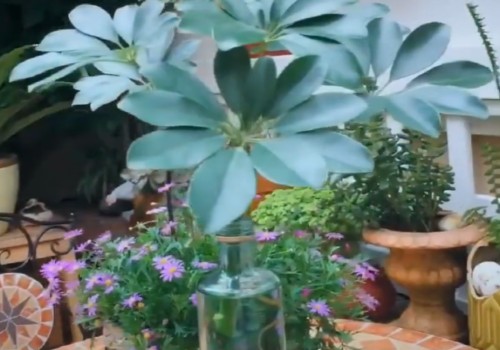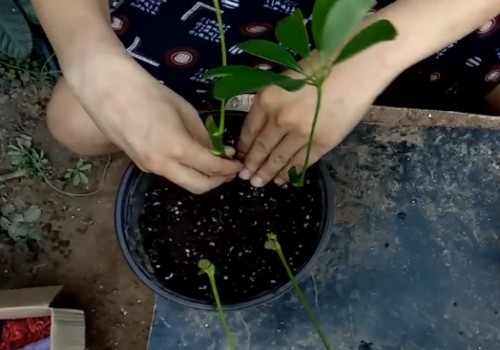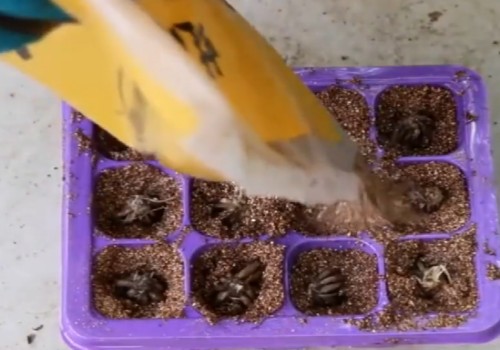Hydroponic culture method of duck foot wood
Duck foot wood is deeply loved by the public because of its evergreen branches and leaves and high ornamental value. at the same time, it also has a certain ability to purify the air, and can also play a good role in embellishing and beautifying the home environment. From the point of view of reproduction and cultivation, it can be cultivated in both soil and water, and no matter which way is adopted to breed, duck foot wood is very easy to survive.

Compared with soil culture, hydroponic culture tends to take root faster, which can shorten its reproduction time. So, how does duck foot wood grow in water? In order to help you master this technology, today the editor will share with you the hydroponic culture method of duck foot wood. I hope it will be helpful to you.
The method of hydroponic culture of duck foot wood is very simple. We only need to prepare a glass bottle, some clear water and a branch bud of duck foot wood to realize the process of hydroponic propagation. The key to the survival of hydroponic culture is to promote the branches and buds to take root smoothly, and then they can not only continue to be hydroponized, but also can be used as potted plants to be cultivated in soil.
Before carrying on the hydroponic culture, we also need to carry on some small treatment to the acquired branches and buds, original in order to better promote their rooting and survival. If the wound at the lower end of the branch bud has been withered or dried, it is recommended to cut it off and cut the lower incision into a bevel. Then cut off the twigs and leaves at the bottom of the buds to avoid submerging them under the surface of the water during hydroponics.
When trimming small branches and leaves, you should pay attention to make the petiole as short as possible, so that the wound is as close to the branch as possible, so as to prevent water pollution during hydroponics. Generally, only a few leaves at the top can be retained, but if there is a terminal bud, the terminal bud must be retained, which is more conducive to the germination and growth of branches after hydroponic survival.
After simply dealing with the branch bud, insert its lower end directly into the glass bottle containing more than half the number of bottles. According to the height of the glass container, you can properly control the length of the branch buds and the retention position of the petiole, directly put the branch buds on the opening of the glass bottle, so that the lower end can be submerged into the water. As long as the temperature is right and the water is clean, it will soon take root and sprout.
Generally speaking, after more than a month, the white young root system germinated at the base of the branch bud of duck foot wood can reach the length of 2-3 cm. This is also enough to prove that we hydroponically cultured duck feet by cutting branches is an important sign of successful survival. Let's see, is the process of hydroponic culture of duck foot wood very simple? Those who are interested might as well try it.
Time: 2019-06-05 Click:
- Prev

The Cuttage method of Camellia oleifera
Duck foot wood is a kind of evergreen plant with high ornamental value, and it can be propagated by cutting. As a family pot cultivation, duck foot wood is very suitable for cutting means to propagate seedlings. However, when some friends get the branches of duck foot wood from their neighbors or through other channels
- Next

When do the peonies sow?
Peony, also known as buttercup, is a beautiful posture, colorful perennial herbaceous flowers, due to good flowering effect, high ornamental value, so generally used for potted and cut flowers. But no matter as potted plant or cut flower material, because its color is very rich
Related
- Fuxing push coffee new agricultural production and marketing class: lack of small-scale processing plants
- Jujube rice field leisure farm deep ploughing Yilan for five years to create a space for organic food and play
- Nongyu Farm-A trial of organic papaya for brave women with advanced technology
- Four points for attention in the prevention and control of diseases and insect pests of edible fungi
- How to add nutrient solution to Edible Fungi
- Is there any good way to control edible fungus mites?
- Open Inoculation Technology of Edible Fungi
- Is there any clever way to use fertilizer for edible fungus in winter?
- What agents are used to kill the pathogens of edible fungi in the mushroom shed?
- Rapid drying of Edible Fungi

